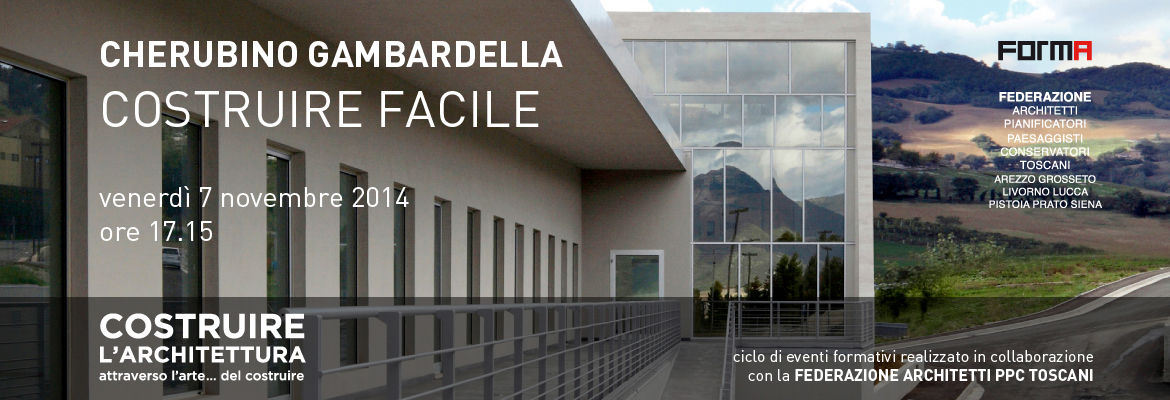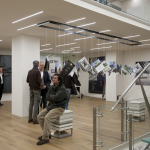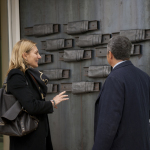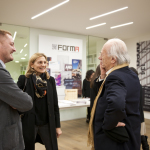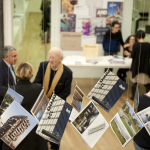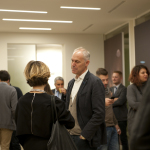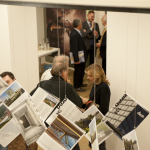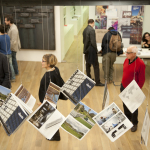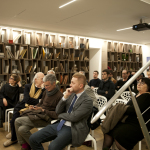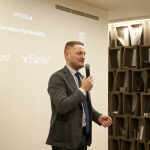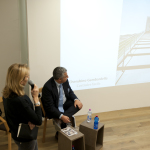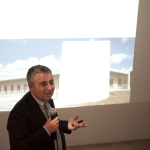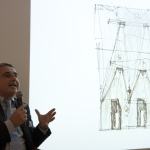Venerdì – 07 novembre 2014 – ore 17.15
Costruire l’architettura: Cherubino Gambardella e Simona Ottieri “Costruire Facile”
Cherubino Gambardella
“Facile” significa concepire la costruzione sciolta dalle teorizzazioni tradizionali. L’archietttura del nostro tempo non può più tenere uniti sotto il suo esclusivo dominio i tre fini posti dalla trattatistica come scopo primario dell’arte di edificare: firmitas, utilitas, venustas. Il primo è ormai sotto il governo dei molteplici specialismi tecnico-scientifici dell’ingegneria in continuo divenire. Il secondo è nei poteri del diritto di proprietà, adesso non più complesso e concreto come quello medievale, ma semplice e astratto, dove il proprietario-committente ha il pieno ed esclusivo godimento del bene e perciò l’autorità di determinare il senso dell’utile in base al proprio fine individuale.
All’architettura resta il compito di perseguire la venustas. Una bellezza non più condizionata da canoni, ma in dialogo serrato, quasi un corpo a corpo, con la moltplicità imprevedibile dei condizionamenti che la contingenza dei due altri fini va di volta in volta ponendo. È il tramonto dell’arché. L’architetto ha la competenza dell’ars per non lasciare alla téchne l’intera configurazione dello spazio.
È l’arte del comporre in immagine bella ciò che trova: prodotti industriali dozzinali, rovine del passato, residui di opere senz’anima e compimento, scarsi mezzi finanziari. L’architettura, quando è tale, deve nobilitare l’arte di arrangiarsi, che in Italia ha una sua patria d’elezione.
La genia napoletana di Cherubino Gambardella e Simona Ottieri ha favorito la fondazione consapevole della loro poetica su questi tratti del nostro tempo, interpretati al meglio, con acume e cultura profondi. Le loro opere, dal parafulmine che diventa belvedere, al derelitto scheletro di cemento armato che diviene raffinata casa dalla forma-bunker-craquelé, all’edificio popolare in fatiscenza prossimo a Scampia che riprende vita e colore secondo un facile ma rigoroso disegno, dando involontaria regola estetica agli abitanti là dove l’illegalità è di casa, e molte altre invenzioni e differenti temi, ma tutti in questa chiave, sembrano prefigurare la cifra tendenziale dell’architettura d’oggi in specie italiana.
Francesco Ventura
Friday – nov 07th 2014 – 17.15 pm
Building the architecture: Cherubino Gambardella and Simona Ottieri “Easy Building”
Cherubino Gambardella
“Easy” means designing buildings free from traditional theorizing. Architecture of our day can no longer join under its exclusive domain the three purposes set by Vitrivius as the art’s primary aim: firmitas, utilitas, venustas. The first — firmitas (solidity) — is now governed by the multitude of ever-changing specializations in engineering. The second — utilitas (usefulness) — is now under the province of property law, no longer as complex and practical as it was in medieval times, having become simple, but abstract, as the property owner/client has the full and exclusive right to the property and thus the authority to chose the sense of usefulness based on his or her individual purposes.
Architecture is left with the task of pursuing venustas (beauty). This beauty is no longer conditioned by the canons; rather it is in a close dialogue — so close they almost in full body contact— with the unpredictable multitude of conditions based on the constraints of the other two purposes determined on each occasion. This is the twilight of arché. The architect is responsible for the ars, not leaving the entire configuration of the space to the téchne.
The architect’s art is that of composing what is found into a beautiful image, whether tacky industrial products, historic ruins, remnants of soulless, incomplete works, or scant funds. Architecture — when it is architecture — should ennoble the art of making due with what you have, an art that has made Italy its chosen land.
The Neapolitan genius of Cherubino Gambardella and Simona Ottieri fostered the intentional founding of their poetics on these traits of our time, given them their finest expression, with profound insight and learning. Their works include a lightning rod turned viewpoint, a derelict cement skeleton turned elegant house with a “crackled bunker” form, or social housing in decay near Scampia returned to life and color with an easy, yet exacting design, giving inadvertent aesthetic order to those who live where illegality is at home. And theirs are many other inventions and diverse themes, but all in the same vein, seeming to presage the trend of today’s architecture, particularly in Italy.
Francesco Ventura
-
© Valentina Muscedra
-
© Valentina Muscedra
-
© Valentina Muscedra
-
© Valentina Muscedra
-
© Valentina Muscedra
-
© Valentina Muscedra
-
© Valentina Muscedra
-
© Valentina Muscedra
-
© Valentina Muscedra
-
© Valentina Muscedra
-
© Valentina Muscedra
-
© Valentina Muscedra
